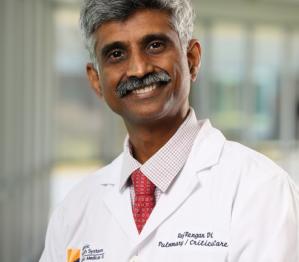Sleep Apnea
Sleep apnea is when a person stops breathing repeatedly during sleep, sometimes hundreds of times during the night, and often for a minute or longer. It is usually accompanied by snoring.
Obstructive sleep apnea (OSA) is caused by a blockage of the airway, usually when the soft tissue in the rear of the throat collapses and closes during sleep. In central sleep apnea, the airway is not blocked but the brain fails to signal the muscles to breathe. Mixed apnea is a combination of the two.
With each apnea event, the brain briefly alerts the sleeper to resume breathing, resulting in fragmented, poor quality sleep. Usually there is no memory of these brief awakenings. Sleep apnea is as common as adult diabetes and affects more than12 million Americans, according to the National Institutes of Health. Risk factors include being male, overweight, and over the age of 40, but it can strike anyone at any age, even children.
Chronic Insomnia
Chronic insomnia is when a person has trouble falling or staying asleep, or wakes up and remains awake for long periods during the night. Insomnia tends to increase with age. It affects about 40 percent of women and 30 percent of men. Insomnia is defined as chronic when it happens at least three nights a week for a month or longer. Common causes of chronic insomnia are depression, chronic stress, and pain or discomfort at night.
Narcolepsy
Narcolepsy is a chronic neurological disorder caused by the brain’s inability to regulate sleep-wake cycles normally. At various times throughout the day, people with narcolepsy experience fleeting urges to sleep. If the urge becomes overwhelming, individuals will fall asleep for periods lasting from a few seconds to several minutes. In rare cases, some people may remain asleep for an hour or longer.
In addition to excessive daytime sleepiness (EDS), three other symptoms are common with narcolepsy:
- Cataplexy, or the sudden loss of voluntary muscle tone
- Vivid hallucinations during sleep onset or upon awakening
- Brief episodes of total paralysis at the beginning or end of sleep
In many patients, narcolepsy is not definitively diagnosed until 10 to 15 years after the first symptoms appear. The cause of narcolepsy remains unknown.
Restless Legs Syndrome (RLS)
Restless legs syndrome (RLS) is an overwhelming urge to move the legs. It’s usually caused by discomfort in the evening and at night and is relieved by moving the legs. RLS can cause difficulty falling or staying asleep, and may cause involuntary jerking of the legs during sleep and sometimes while awake.
Up to 8 percent of the U.S. population may have this neurologic condition, which has no known cause in many cases. Researchers suspect RLS may be due to an imbalance of the brain chemical dopamine, which sends messages to control muscle movement. It sometimes happens with other conditions, such as peripheral neuropathy (damage to the nerves in the hands and feet from chronic diseases like diabetes and alcoholism) or iron deficiency.
Periodic Limb Movement Disorder (PLMD)
Periodic limb movement disorder (PLMD) affects people only during sleep. It can range from shallow, continuous movement of the ankle or toes to wild and strenuous kicking and flailing of the legs and arms. Abdominal, oral, and nasal movement sometimes happens with PLMD. PLMD and restless legs syndrome (RLS) are separate disorders, but can happen together.
Bruxism
Bruxism (often called “gnashing”) is involuntary teeth grinding, either while awake or asleep (nocturnal bruxism), which results in tooth damage and jaw pain. Nocturnal bruxism happens in about 5 percent to 20 percent of adults and is even more common among children. On average, this grinding can happen 25 times per night, in four- to five-second episodes. The cause of bruxism is unknown, but it may be linked to stress, facial or oral trauma, nervous system problems, poor diet, and allergies.
Circadian Rhythm Disorders
Circadian rhythm disorders are disruptions of the natural biological cycles that control how people are in tune with night and day. Most people function on a circadian rhythm of about 24 hours, controlled by the internal biological clock in the brain. If you have a circadian rhythm disorder, your body can’t maintain its normal rhythm. Your natural sleep schedule changes so that you are out of phase with day and night.
Sleep Terrors
Sleep terrors (also known as Pavor Nocturnus, incubus, severe autonomic discharge, or night terror) are characterized by a sudden awakening from slow-wave sleep with a piercing scream or cry. This is accompanied by displays of intense fear and partial or total amnesia for the events during the episode. Sleep terrors usually happen within the first third of the night. In the most severe cases, episodes occur almost nightly and may cause self-injury or injury to others.
Sleepwalking
Sleepwalking, also called somnambulism, is a behavior disorder that originates during deep sleep and results in walking or performing other complex behaviors while asleep. It is more common in children than adults, and it is more likely to occur if a person is sleep deprived. It’s estimated that between 1 percent and 15 percent of people sleepwalk.











